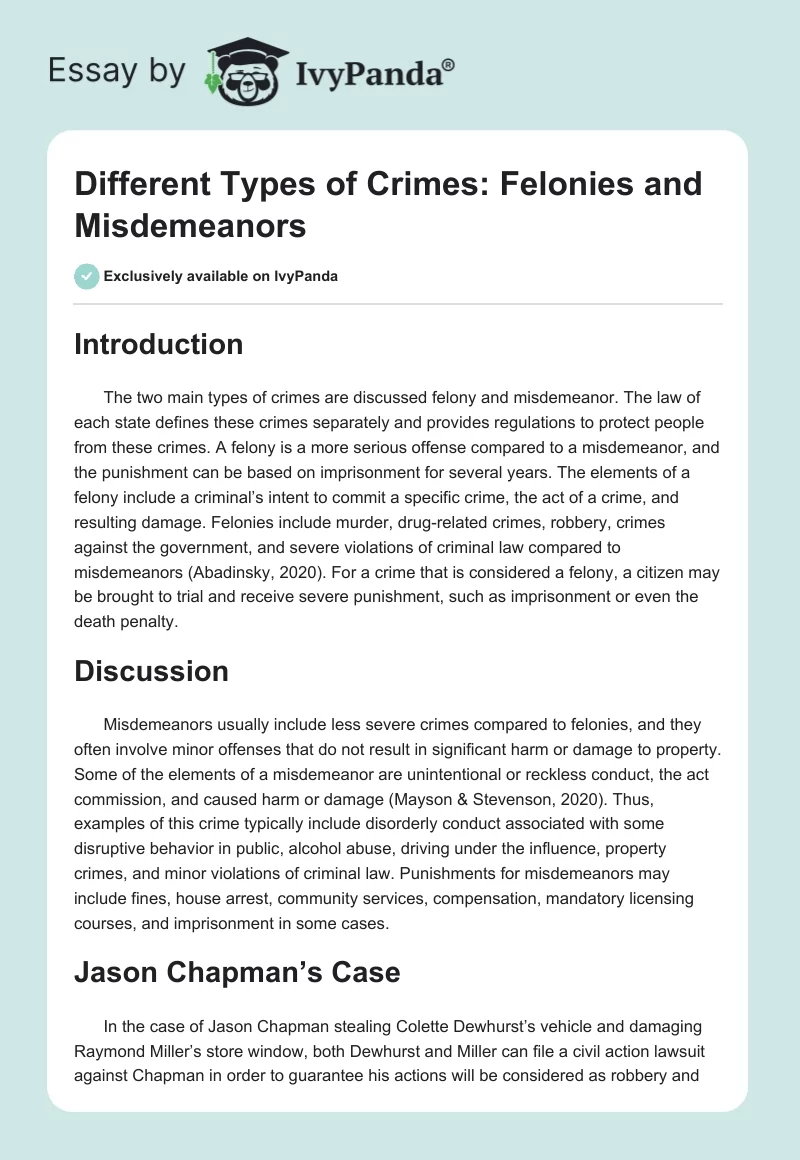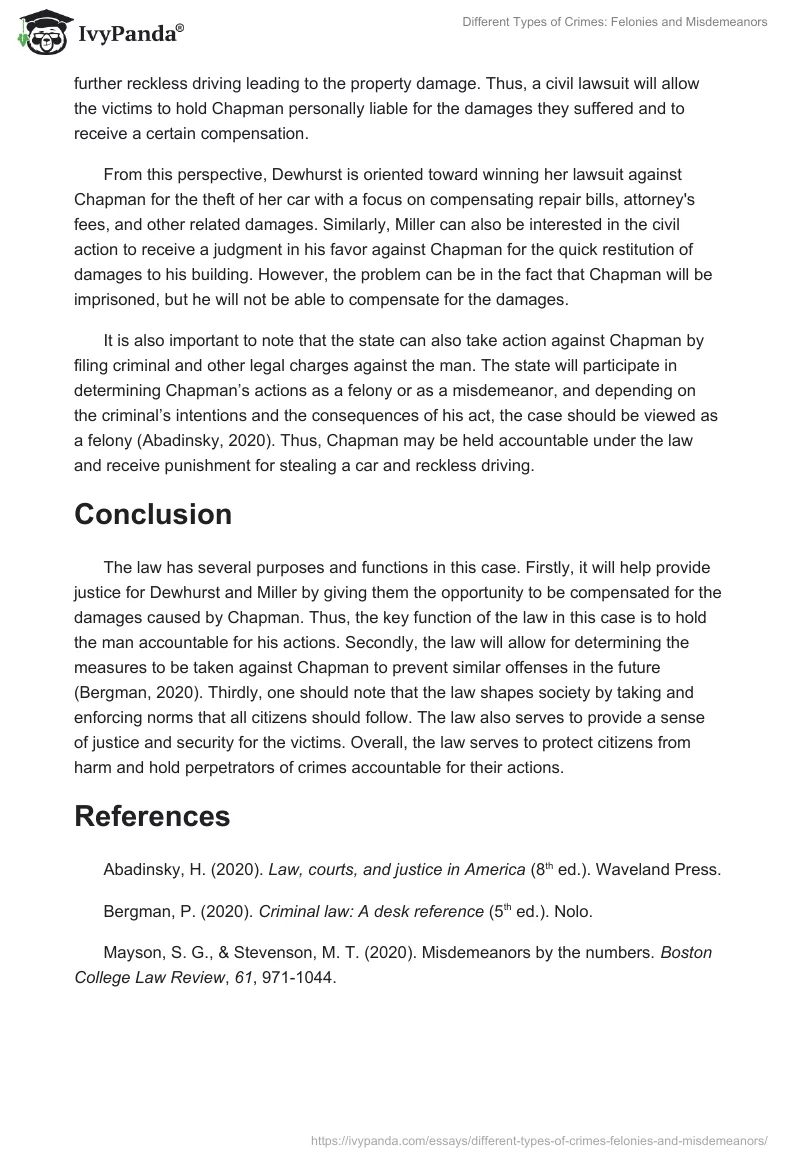Introduction
The two main types of crimes are discussed felony and misdemeanor. The law of each state defines these crimes separately and provides regulations to protect people from these crimes. A felony is a more serious offense compared to a misdemeanor, and the punishment can be based on imprisonment for several years. The elements of a felony include a criminal’s intent to commit a specific crime, the act of a crime, and resulting damage. Felonies include murder, drug-related crimes, robbery, crimes against the government, and severe violations of criminal law compared to misdemeanors (Abadinsky, 2020). For a crime that is considered a felony, a citizen may be brought to trial and receive severe punishment, such as imprisonment or even the death penalty.
Discussion
Misdemeanors usually include less severe crimes compared to felonies, and they often involve minor offenses that do not result in significant harm or damage to property. Some of the elements of a misdemeanor are unintentional or reckless conduct, the act commission, and caused harm or damage (Mayson & Stevenson, 2020). Thus, examples of this crime typically include disorderly conduct associated with some disruptive behavior in public, alcohol abuse, driving under the influence, property crimes, and minor violations of criminal law. Punishments for misdemeanors may include fines, house arrest, community services, compensation, mandatory licensing courses, and imprisonment in some cases.
Jason Chapman’s Case
In the case of Jason Chapman stealing Colette Dewhurst’s vehicle and damaging Raymond Miller’s store window, both Dewhurst and Miller can file a civil action lawsuit against Chapman in order to guarantee his actions will be considered as robbery and further reckless driving leading to the property damage. Thus, a civil lawsuit will allow the victims to hold Chapman personally liable for the damages they suffered and to receive a certain compensation.
From this perspective, Dewhurst is oriented toward winning her lawsuit against Chapman for the theft of her car with a focus on compensating repair bills, attorney’s fees, and other related damages. Similarly, Miller can also be interested in the civil action to receive a judgment in his favor against Chapman for the quick restitution of damages to his building. However, the problem can be in the fact that Chapman will be imprisoned, but he will not be able to compensate for the damages.
It is also important to note that the state can also take action against Chapman by filing criminal and other legal charges against the man. The state will participate in determining Chapman’s actions as a felony or as a misdemeanor, and depending on the criminal’s intentions and the consequences of his act, the case should be viewed as a felony (Abadinsky, 2020). Thus, Chapman may be held accountable under the law and receive punishment for stealing a car and reckless driving.
Conclusion
The law has several purposes and functions in this case. Firstly, it will help provide justice for Dewhurst and Miller by giving them the opportunity to be compensated for the damages caused by Chapman. Thus, the key function of the law in this case is to hold the man accountable for his actions. Secondly, the law will allow for determining the measures to be taken against Chapman to prevent similar offenses in the future (Bergman, 2020). Thirdly, one should note that the law shapes society by taking and enforcing norms that all citizens should follow. The law also serves to provide a sense of justice and security for the victims. Overall, the law serves to protect citizens from harm and hold perpetrators of crimes accountable for their actions.
References
Abadinsky, H. (2020). Law, courts, and justice in America (8th ed.). Waveland Press.
Bergman, P. (2020). Criminal law: A desk reference (5th ed.). Nolo.
Mayson, S. G., & Stevenson, M. T. (2020). Misdemeanors by the numbers. Boston College Law Review, 61, 971-1044.


